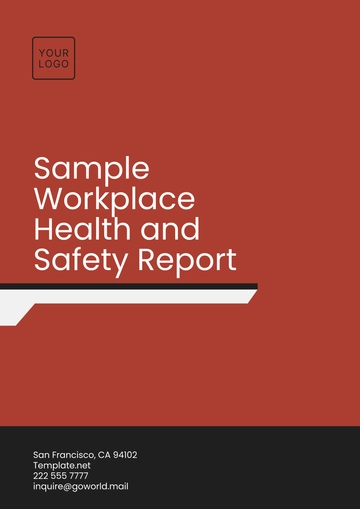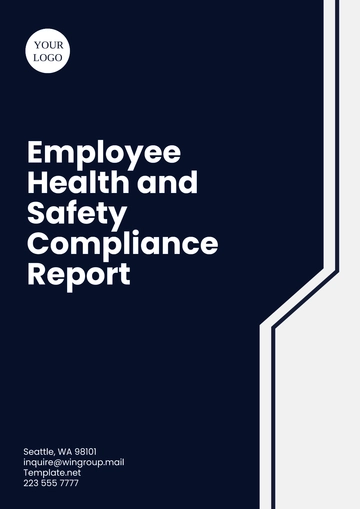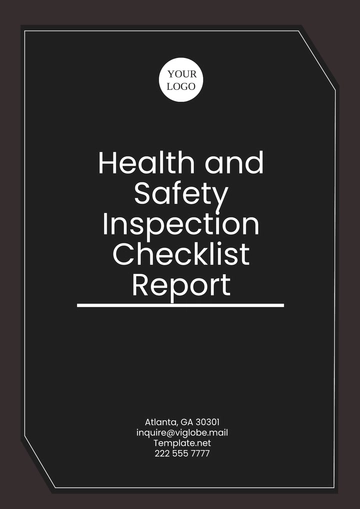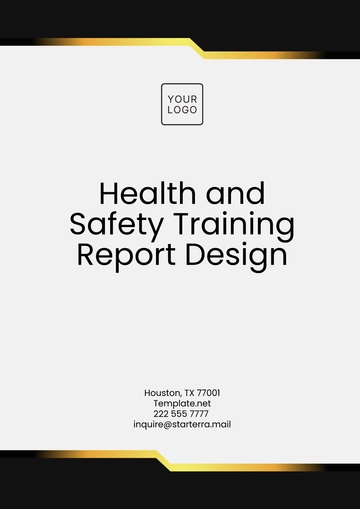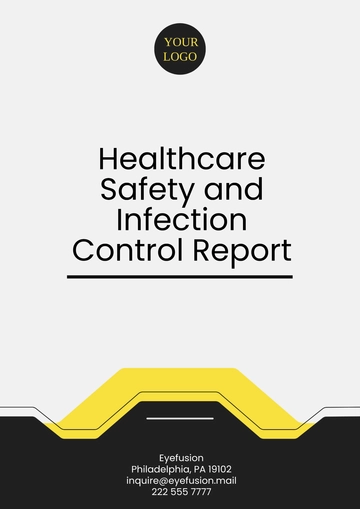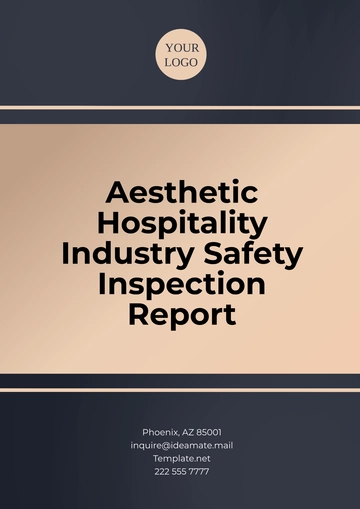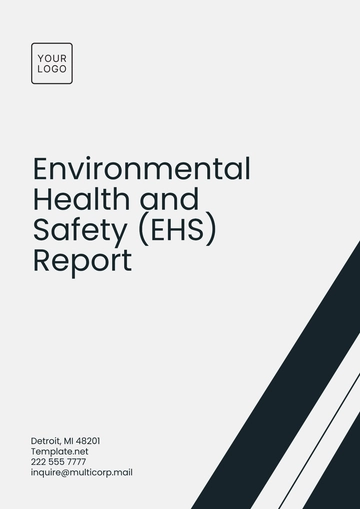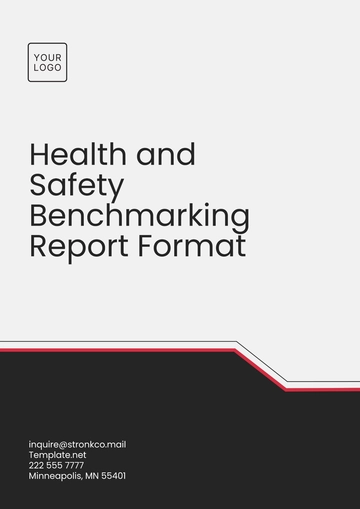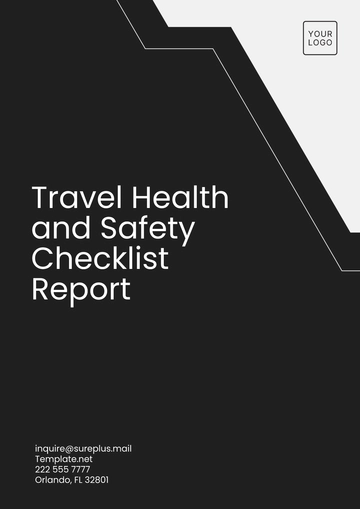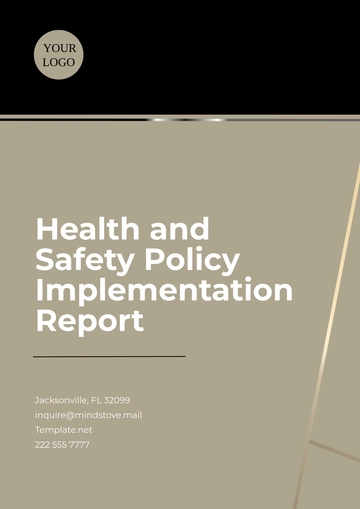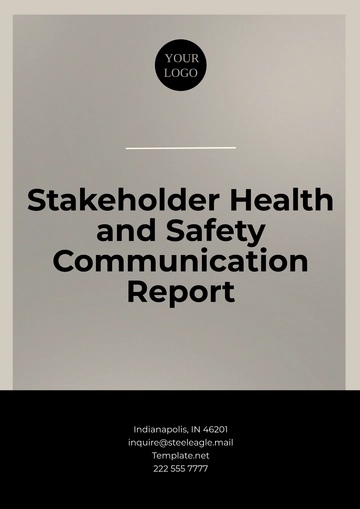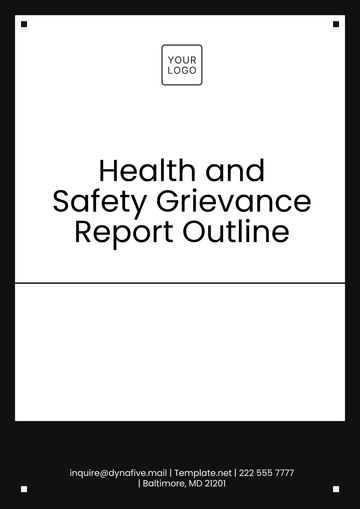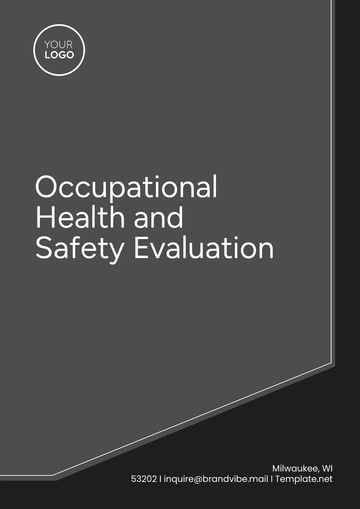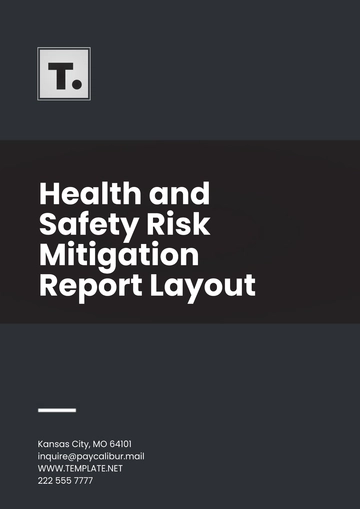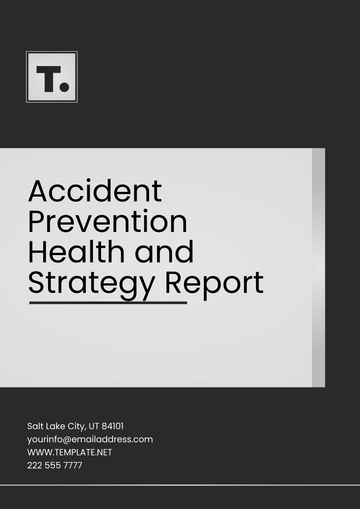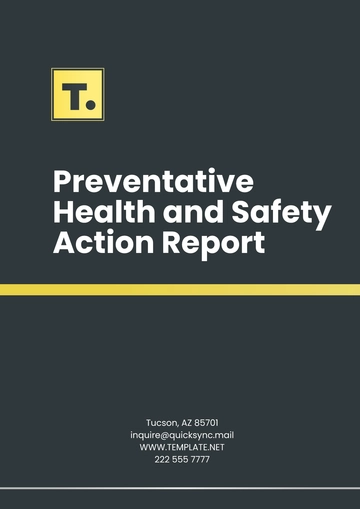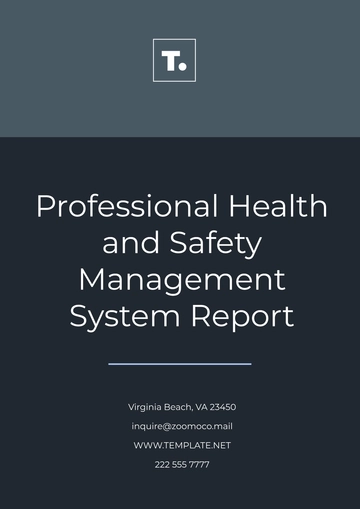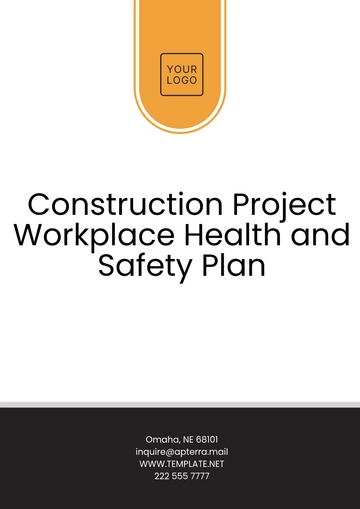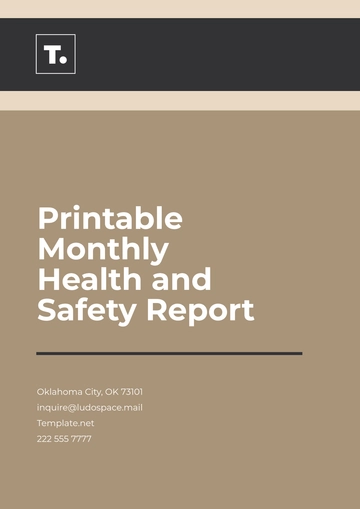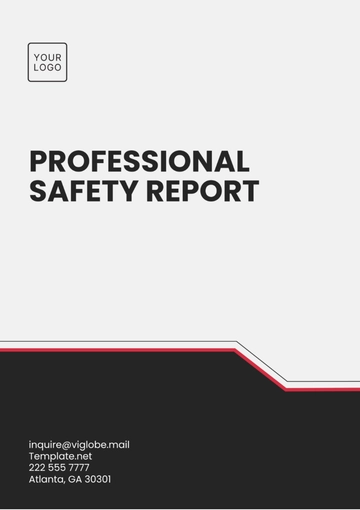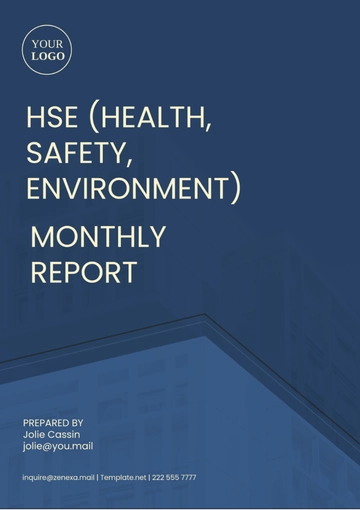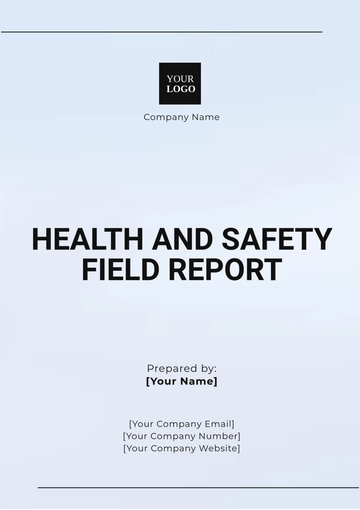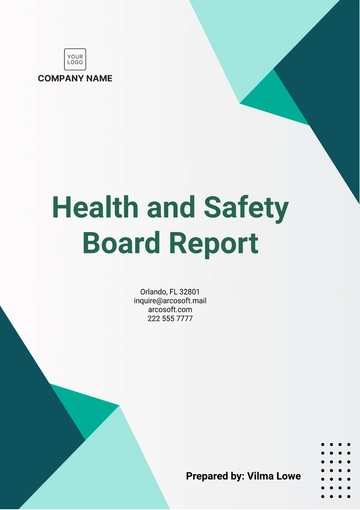Free Law Firm Safety Report
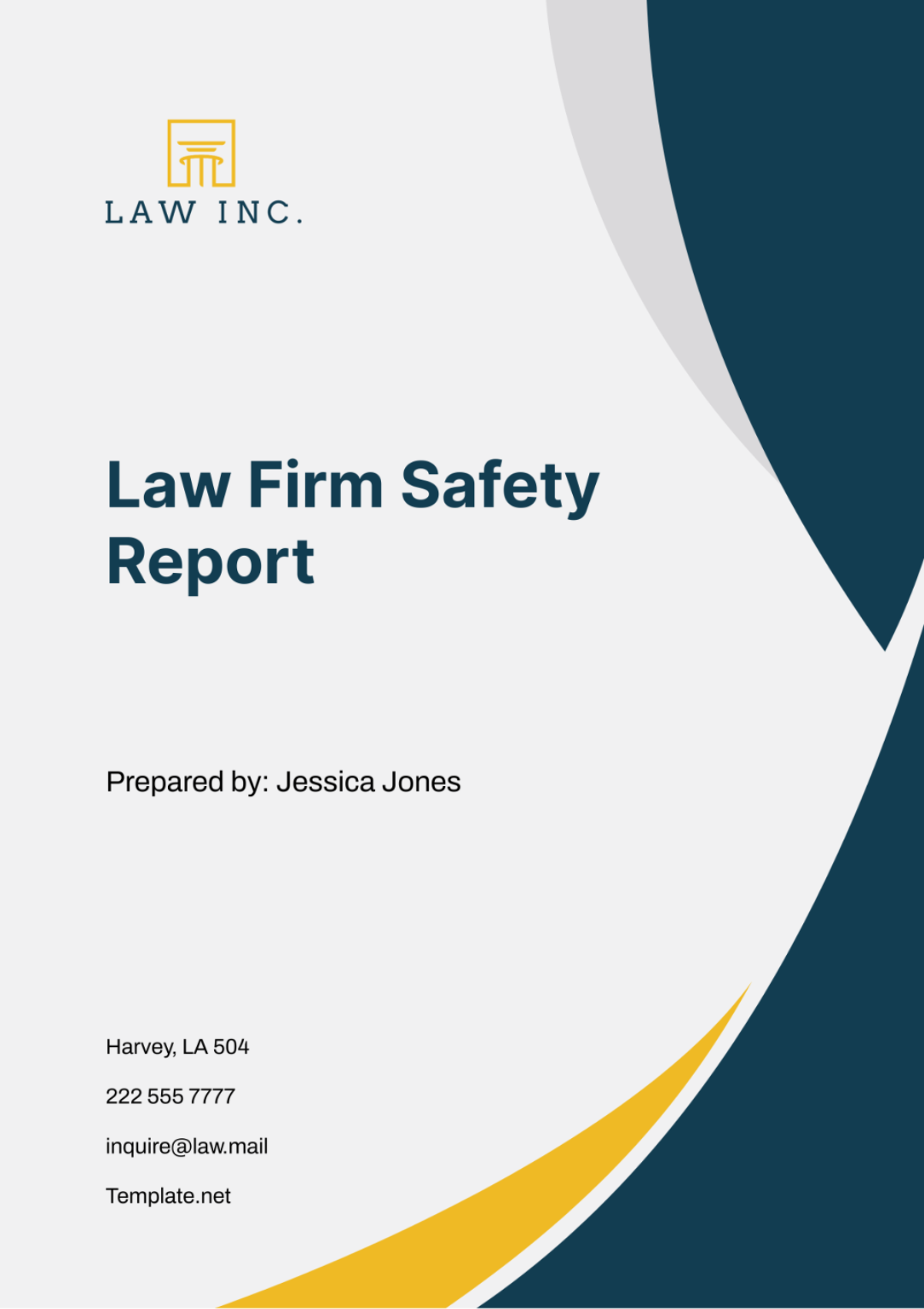
I. Introduction
A. Purpose
This Safety Report serves as a foundational document outlining the meticulous safety protocols and practices established by [Your Company Name]. It is designed to convey our unwavering commitment to safeguarding the well-being of our employees, clients, and visitors within our premises. By articulating our dedication to safety in a transparent manner, we aim to foster trust and confidence among all stakeholders.
B. Scope
This comprehensive report encapsulates every facet of safety within the domain of [Your Company Name], ranging from the physical infrastructure and access control measures to emergency procedures and regulatory compliance. It delineates the strategies and initiatives undertaken to create a secure environment, ensuring that all operations align with legal requirements and industry best practices. Moreover, this report delves into the realm of safety training and awareness, shedding light on the educational programs devised to empower our workforce with the knowledge and skills necessary to mitigate risks effectively. Through meticulous documentation and analysis, we endeavor to uphold the highest standards of safety across all facets of our organization.
II. Safety Policies and Procedures
A. Physical Safety Measures
Office Layout and Design
Our office layout is meticulously designed to optimize both functionality and safety. Clear pathways, unobstructed emergency exits, and ergonomic workstations are paramount considerations in our design philosophy.
Fire safety is prioritized, with strategically located fire extinguishers, smoke detectors, and fire alarms ensuring swift response in the event of an emergency.
First aid stations equipped with essential medical supplies, including Automated External Defibrillators (AEDs), are readily accessible to address medical emergencies promptly.
B. Access Control
Access Control Systems
[Your Company Name] employs state-of-the-art access control systems, including biometric scanners and keycard entry systems, to regulate entry and exit points throughout our premises.
Authorized personnel are issued unique credentials, granting them access to designated areas based on their roles and responsibilities within the organization.
Visitor management protocols are in place to ensure that all guests undergo registration and are accompanied by authorized personnel during their visit.
Security Personnel
Trained security personnel are stationed at key access points to monitor ingress and egress, deter unauthorized entry, and provide assistance as needed.
Security personnel undergo rigorous training in conflict resolution, emergency response, and customer service to uphold the highest standards of professionalism and safety.
Surveillance Systems
Closed-circuit television (CCTV) cameras are strategically positioned throughout our premises to monitor activity and enhance security surveillance.
Surveillance footage is monitored in real-time by trained personnel and archived for review in the event of security incidents or investigations.
III. Emergency Procedures
A. Fire Safety
Fire Evacuation Procedures
Evacuation Routes: [Your Company Name] has designated primary and alternative evacuation routes posted throughout the premises. These routes are strategically planned to ensure safe and efficient evacuation in the event of a fire emergency.
Assembly Points: Designated assembly points are located outside the building to facilitate accountability and ensure all occupants are safely evacuated. These assembly points are clearly marked and communicated to all employees during onboarding and regular fire drills.
Fire Drill Frequency: Regular fire drills are conducted [monthly/quarterly], providing employees with the opportunity to practice evacuation procedures and familiarize themselves with exit routes and assembly points.
Fire Suppression Systems
Automatic Fire Suppression: [Your Company Name] is equipped with automatic fire suppression systems, including sprinkler systems and fire alarms, designed to detect and suppress fires in their early stages.
Fire Extinguishers: Portable fire extinguishers are strategically placed throughout the premises, conforming to relevant fire safety codes and standards. Regular inspections and maintenance ensure that fire extinguishers are fully operational and readily accessible.
B. Medical Emergencies
Emergency Response Protocol
Emergency Contact Information: Emergency contact numbers for local emergency services, medical facilities, and poison control are prominently displayed throughout the premises and included in employee handbooks.
Trained First Aid Responders: A team of designated first aid responders, including employees trained in CPR and basic first aid, are available during all business hours to provide immediate assistance in medical emergencies.
Emergency Medical Supplies: First aid kits containing essential medical supplies, including bandages, antiseptics, and splints, are located in designated areas throughout the premises for quick access during medical emergencies.
Emergency Communication
Emergency Notification System: [Your Company Name] utilizes an emergency notification system to alert employees of medical emergencies, severe weather events, or other critical incidents. This system delivers real-time alerts via email, text message, and overhead announcements.
Communication Protocols: Clear communication protocols are established to ensure effective coordination and dissemination of information during medical emergencies. Designated individuals are responsible for initiating emergency response procedures and coordinating with external emergency services if necessary.
IV. Compliance with Legal Requirements
A. Occupational Safety and Health Administration (OSHA) Compliance
OSHA Regulations Overview
[Your Company Name] adheres to all relevant OSHA regulations pertaining to workplace safety, health, and environmental practices. This includes compliance with standards such as hazard communication, personal protective equipment (PPE), and recordkeeping requirements.
OSHA Training: Employees receive comprehensive training on OSHA regulations relevant to their job duties, including hazard identification, chemical safety, and ergonomics. Training sessions are conducted regularly to ensure ongoing compliance and awareness.
Safety Inspections and Audits
Regular Inspections: Routine safety inspections are conducted by designated safety officers to identify potential hazards, assess safety procedures, and ensure compliance with OSHA standards.
Audit Compliance: [Your Company Name] maintains detailed records of safety inspections, audits, and corrective actions taken to address identified deficiencies. These records are periodically reviewed to verify compliance with OSHA regulations and demonstrate our commitment to maintaining a safe workplace.
B. Other Relevant Regulations
Local, State, and Federal Regulations
Building Codes: [Your Company Name] complies with local building codes and regulations to ensure the structural integrity and safety of our premises. This includes adherence to requirements for fire safety, accessibility, and occupancy limits.
Environmental Regulations: In addition to OSHA regulations, [Your Company Name] complies with relevant environmental regulations governing waste management, hazardous materials handling, and pollution prevention.
Documentation and Recordkeeping
Regulatory Documentation: [Your Company Name] maintains accurate and up-to-date documentation of regulatory permits, licenses, and certifications required to operate our business in compliance with local, state, and federal regulations.
Record Retention: Records of regulatory inspections, permits, training certifications, and incident reports are retained for the required period as mandated by applicable regulations. These records are accessible for review by regulatory authorities during inspections or audits.
V. Safety Training and Awareness
A. Employee Training Programs
Comprehensive Safety Training
[Your Company Name] offers comprehensive safety training programs for all employees, covering a wide range of topics essential for maintaining a safe workplace environment.
Training sessions are conducted by qualified instructors and may include both in-person workshops and online courses to accommodate different learning styles and schedules.
Topics covered in safety training programs include:
Emergency procedures (fire evacuation, medical emergencies, etc.)
Hazard identification and risk assessment
Proper use of personal protective equipment (PPE)
Ergonomics and workstation safety
Chemical safety and hazardous materials handling
Workplace violence prevention and conflict resolution
Frequency and Participation
Safety training sessions are conducted annually to ensure that employees receive regular updates on safety procedures and regulations.
Attendance and participation in safety training programs are mandatory for all employees, with records maintained to track completion and ensure compliance.
B. Safety Communication
Communication Channels
[Your Company Name] utilizes various communication channels to disseminate safety-related information to employees, including:
Email announcements
Intranet portals or digital bulletin boards
Safety posters and signage placed in prominent areas throughout the premises
Team meetings and safety briefings
Employees are encouraged to actively engage with safety communications and raise any concerns or suggestions for improvement.
Feedback Mechanisms
An open-door policy is maintained to encourage employees to voice safety concerns or suggestions for improvement.
Anonymous suggestion boxes or online platforms may be provided to allow employees to submit feedback confidentially.
Safety committees or employee representatives may be established to facilitate communication and collaboration on safety-related initiatives.
VI. Incident Reporting and Investigation
A. Incident Reporting Procedures
Reporting Mechanisms
Employees are instructed to report all workplace accidents, injuries, near misses, and safety concerns promptly to their immediate supervisor or designated safety personnel.
Incident reporting forms are provided and may be submitted electronically or in hard copy, ensuring that all necessary details are documented for investigation and analysis.
Anonymous Reporting Options
[Your Company Name] offers anonymous reporting options to encourage employees to report safety concerns without fear of reprisal or retaliation.
Anonymous reporting mechanisms may include dedicated hotlines, online reporting forms, or suggestion boxes placed in discreet locations.
B. Incident Investigation
Investigation Process
Upon receiving an incident report, [Your Company Name] initiates an investigation promptly to determine the root cause(s) and contributing factors.
Investigation teams may be formed, comprising representatives from relevant departments or specialized safety personnel, to conduct a thorough analysis of the incident.
The investigation process may involve interviewing witnesses, reviewing surveillance footage, examining physical evidence, and consulting external experts if necessary.
Corrective Actions and Preventive Measures
Based on the findings of the investigation, corrective actions are identified and implemented to address immediate hazards and prevent recurrence.
Preventive measures may include updating safety procedures, providing additional training, enhancing equipment or infrastructure, or implementing new policies or controls.
Follow-up inspections and reviews are conducted to verify the effectiveness of corrective actions and ensure continuous improvement in safety performance.
VII. Conclusion
A. Summary of Safety Performance
Key Safety Metrics
[Your Company Name] has maintained a strong commitment to safety, as evidenced by our performance metrics, including:
Low incident rates of workplace accidents, injuries, and near misses.
High levels of compliance with safety regulations and standards.
Positive feedback from employees regarding safety culture and awareness.
Evaluation of Safety Performance
Through diligent adherence to safety protocols and continuous improvement efforts, [Your Company Name] has achieved notable successes in maintaining a safe and secure workplace environment.
Regular safety audits and inspections have helped identify areas for improvement and ensure proactive measures are taken to address potential hazards.
B. Future Safety Initiatives
Ongoing Safety Improvements
[Your Company Name] remains committed to fostering a culture of safety and proactively addressing emerging safety challenges.
Future initiatives may include:
Continued investment in employee training and development programs to enhance safety knowledge and skills.
Implementation of advanced safety technologies and systems to further mitigate risks and improve incident response.
Collaboration with industry partners and regulatory agencies to stay abreast of evolving safety standards and best practices.
Stakeholder Collaboration
[Your Company Name] recognizes the importance of engaging with employees, clients, and other stakeholders in promoting a safe and healthy work environment.
Open communication channels will be maintained to solicit feedback, address concerns, and encourage active participation in safety initiatives.
[Your Company Name] reaffirms its unwavering commitment to prioritizing the safety and well-being of all individuals associated with our organization. By adhering to the highest standards of safety excellence and fostering a culture of continuous improvement, we strive to create a workplace environment where everyone can thrive with confidence and peace of mind.
For further inquiries or information regarding our safety practices, please contact [Your Company Email].
- 100% Customizable, free editor
- Access 1 Million+ Templates, photo’s & graphics
- Download or share as a template
- Click and replace photos, graphics, text, backgrounds
- Resize, crop, AI write & more
- Access advanced editor
Promote workplace safety with Template.net's Law Firm Safety Report Template. This editable and customizable document facilitates the documentation of safety procedures, incidents, and compliance measures. Crafted by legal and safety experts, it ensures clarity and professionalism in safety reporting. Editable in our Ai Editor Tool for seamless customization and integration into your firm's safety protocols.
You may also like
- Sales Report
- Daily Report
- Project Report
- Business Report
- Weekly Report
- Incident Report
- Annual Report
- Report Layout
- Report Design
- Progress Report
- Marketing Report
- Company Report
- Monthly Report
- Audit Report
- Status Report
- School Report
- Reports Hr
- Management Report
- Project Status Report
- Handover Report
- Health And Safety Report
- Restaurant Report
- Construction Report
- Research Report
- Evaluation Report
- Investigation Report
- Employee Report
- Advertising Report
- Weekly Status Report
- Project Management Report
- Finance Report
- Service Report
- Technical Report
- Meeting Report
- Quarterly Report
- Inspection Report
- Medical Report
- Test Report
- Summary Report
- Inventory Report
- Valuation Report
- Operations Report
- Payroll Report
- Training Report
- Job Report
- Case Report
- Performance Report
- Board Report
- Internal Audit Report
- Student Report
- Monthly Management Report
- Small Business Report
- Accident Report
- Call Center Report
- Activity Report
- IT and Software Report
- Internship Report
- Visit Report
- Product Report
- Book Report
- Property Report
- Recruitment Report
- University Report
- Event Report
- SEO Report
- Conference Report
- Narrative Report
- Nursing Home Report
- Preschool Report
- Call Report
- Customer Report
- Employee Incident Report
- Accomplishment Report
- Social Media Report
- Work From Home Report
- Security Report
- Damage Report
- Quality Report
- Internal Report
- Nurse Report
- Real Estate Report
- Hotel Report
- Equipment Report
- Credit Report
- Field Report
- Non Profit Report
- Maintenance Report
- News Report
- Survey Report
- Executive Report
- Law Firm Report
- Advertising Agency Report
- Interior Design Report
- Travel Agency Report
- Stock Report
- Salon Report
- Bug Report
- Workplace Report
- Action Report
- Investor Report
- Cleaning Services Report
- Consulting Report
- Freelancer Report
- Site Visit Report
- Trip Report
- Classroom Observation Report
- Vehicle Report
- Final Report
- Software Report

